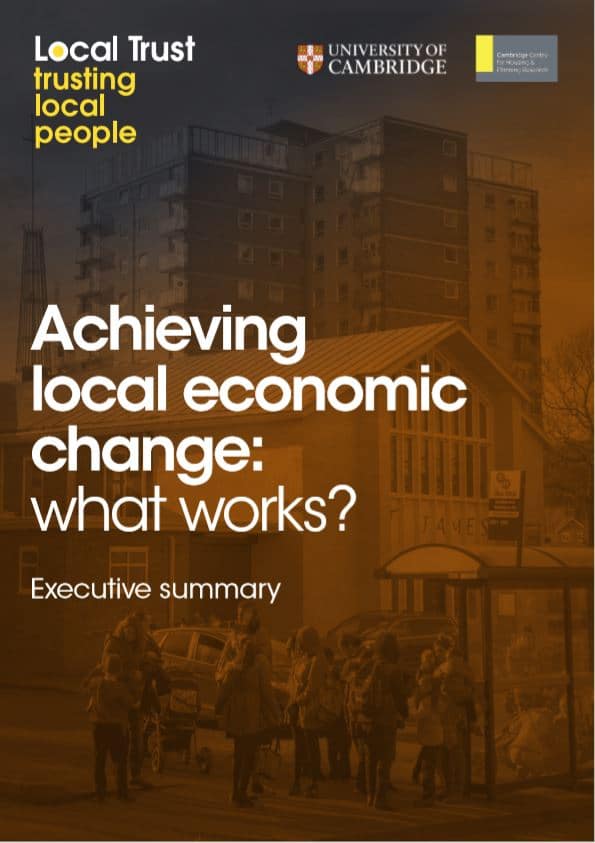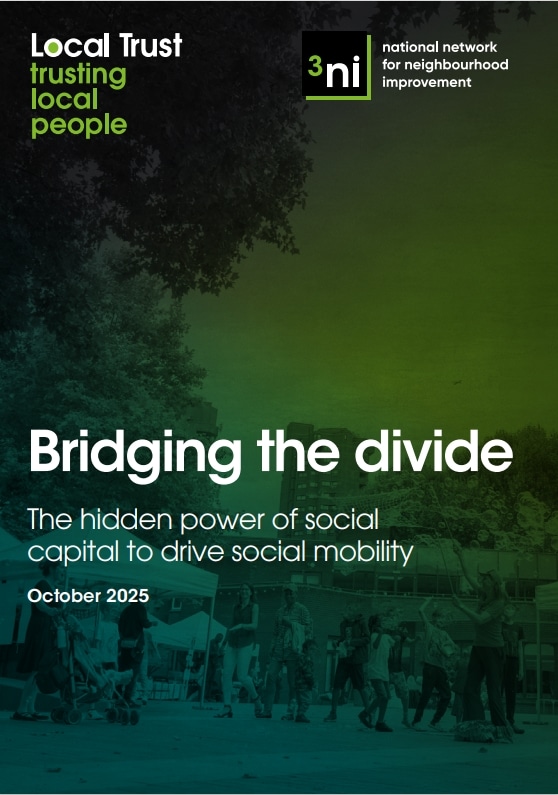Achieving local economic change: what works?
What can be learnt from 40 years of local economic regeneration policy?

Since the late 1980s, successive governments have sought to include local stakeholders in the delivery of regeneration funding. Communities have been invited to decide boundaries, lead local partnerships and determine the type, scale and duration of area based initiatives. This research examines the impact of these community-led partnerships in deprived areas and explores which characteristics make them successful in achieving local economic change.
Local Trust asked researchers from the Cambridge Centre for Housing and Planning Research to undertake a rapid review of evidence on the impact of English regeneration policy over the past 40 years. Local Trust commissioned the research to inform proposed new government initiatives such as the Stronger Towns Fund. The findings support a place-based approach at the neighbourhood level, built on a community-led partnership model.
We commissioned the research to better understand what drives economic change in deprived or left-behind areas and to explore whether the characteristics at the heart of the Big Local programme are factors for success in other initiatives.
The seven characteristics examined in this research are:
- communities of between 5 and 15,000 people
- control of decisions, design and resources by local people
- basic social infrastructure already in place (such as a meeting space or community association)
- holistic approaches which take account of broader issues, not just jobs and training
- bespoke approaches, rooted in each area’s particular characteristics
- long-term, consistent commitment over 10 to 15 years
- connection with economic opportunities beyond the immediate area.



